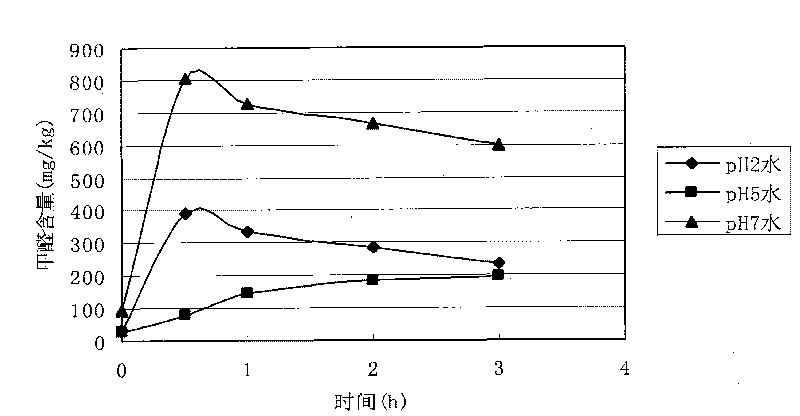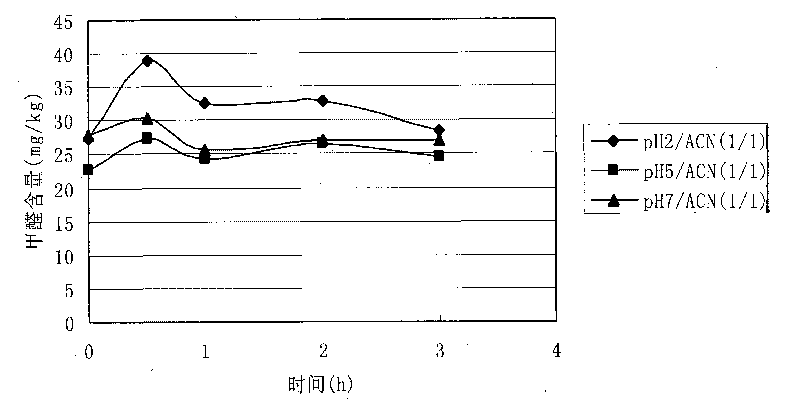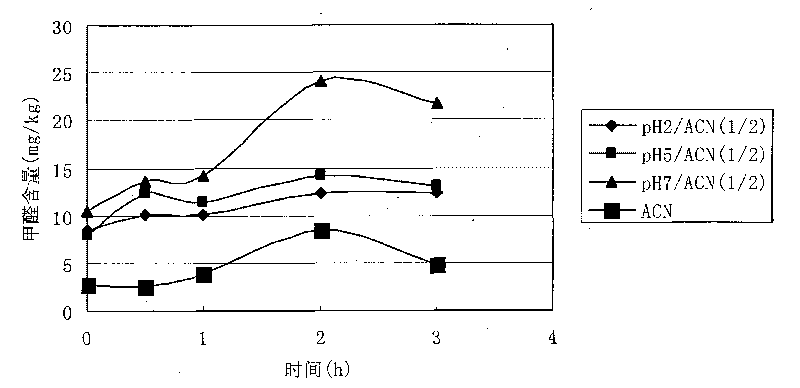Method for testing formaldehyde in food by means of derivation extraction
An extraction method and formaldehyde technology, which is applied in the field of liquid chromatography for the determination of formaldehyde in food, to achieve the effects of improving detection efficiency, inhibiting release, improving stability and reproducibility
- Summary
- Abstract
- Description
- Claims
- Application Information
AI Technical Summary
Problems solved by technology
Method used
Image
Examples
Embodiment 1
[0063] A detailed description will be given below of specific embodiments of the present invention.
[0064] 1.1 Method summary
[0065] Direct extraction of formaldehyde from derivatized samples. After liquid-liquid extraction and purification, it was determined by liquid chromatography at a wavelength of 365nm, and quantified by external standard method.
[0066] 1.2 Reagents and materials
[0067] Unless otherwise stated, all reagents used were of analytical grade. The water used was ultrapure water cooled after boiling for 10 min.
[0068] 1.2.1 Acetonitrile: chromatographically pure.
[0069] 1.2.2 n-Hexane: chromatographically pure.
[0070] 1.2.3 Ammonium sulfate.
[0071] 1.2.4 Sodium acetate.
[0072] 1.2.5 Glacial acetic acid
[0073] 1.2.6 Buffer solution (pH 5): Weigh 2.64g of sodium acetate, dissolve it in an appropriate amount of water, add 1.0mL of glacial acetic acid, and dilute to 500mL with water.
[0074] 1.2.7 2,4-Dinitrophenylhydrazine: purity ≥99...
PUM
 Login to View More
Login to View More Abstract
Description
Claims
Application Information
 Login to View More
Login to View More - R&D
- Intellectual Property
- Life Sciences
- Materials
- Tech Scout
- Unparalleled Data Quality
- Higher Quality Content
- 60% Fewer Hallucinations
Browse by: Latest US Patents, China's latest patents, Technical Efficacy Thesaurus, Application Domain, Technology Topic, Popular Technical Reports.
© 2025 PatSnap. All rights reserved.Legal|Privacy policy|Modern Slavery Act Transparency Statement|Sitemap|About US| Contact US: help@patsnap.com



